In late March, I had the great opportunity to attend the American Montessori Society’s annual conference in Dallas. It was wonderful, inspiring, overwhelming and so busy! It was hard to figure out where you wanted to be, because there was too much to see and to hear.
One day my coworkers and I wandered into a session labeled “Teacher Networking”. AMS had invited local Montessori teachers to set-up some of their best and most interesting works — it was like a live Pinterest. This is where I met Loree Birkenback, head of St. James Episcopal School in Dallas, and saw her Fundamental Needs of the Worm work. She was kind enough to allow me to recreate it at my school, and post it here to share with you all. She also forwarded me her original extension printables (What do worms need? and papers for measuring worms), and you may download the PDF’s here (Earthworm documents). I have made a few changes to the lessons to make the lessons fit my school and my group, but for the most part it stayed the same.
After I had seen Loree’s wonderful ideas, and I was super excited about worms, I was back in the exhibit hall when I saw and purchased these cards from Montessori 1, 2, 3. This company makes beautiful materials. We were so impressed with their materials that teachers at our school requested the set of parts of the vertebrates with the objects for our kindergarten gift. Marshall, one of the owners of Montessori 1 2 3, made the cards available for you to download for free. While you’re there check out all the other wonderful materials and the other free downloads.
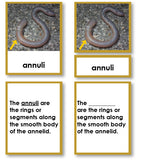
All the following lessons can be done in one day (how I did them with both groups of kindergarteners) or spread out over the course of a week (how I did them in my morning class). We also went a little worm overboard and set up a worm composting bin!
Materials for all three lessons – All lessons are originally from Loree Birkenback
- Three plastic deep-sided trays (I went with different colors, but it doesn’t matter)
- 5 washcloths (I coordinated mine with the trays)
- Worms! We used Big Reds, Loree calls for Canadian Nightcrawlers
- Lettuce, potato peeling, and cheese
- Large flashlight or lamp
- Parts of Worm cards
Lesson One – Parts of the Earthworm
- We gathered together as a group and placed our worms in an observation tray.
- Using the cards from Montessori 1, 2, 3, we went through the parts of the worm while comparing them to the actual worm we had.
- The card material was placed on the shelf for individual work, and the worm was return to the container.
- For independent work, the child can match the three part cards, and then use the blackline that I made to make their own parts of the worm book.
Lesson Two – What Food does a worm need?
- You will need one of the plastic trays, two moist washcloths, and lettuce, potato peels and cheese.
- Gather the class together and say, “Let’s see which food these worms prefer. We are going to put the cheese on this side and the lettuce and potato on this side.” Then cover both sides with damp washcloths and place a few worms in the middle of the tray.
- We gave our worms all morning to decided which side they prefered. Lorre’s original lesson says they should have decided in 30 minutes,
- We gathered back together as a group and lifted the washcloth to see where the worms went! (sidenote, if you have to fold your washcloths in half, keep the fat folds to the middle, we had two worms hiding in-between the layers of the cloths. I then cut our cloths in half because this kept happening.)
Lesson Three – Do worms prefer moist or dry areas?
- You will need a plastic tray and two washcloths
- Gather the group and say, “Today, let’s see if the worms prefer the moist washcloth or the dry washcloth.”
- Place the moist cloth on one side and the dry one on the other, add the worms to the middle of the tray,
- Allow the worms some time to make their decision.
- Gather back as a group and reveal where the worms went!
Lesson Four – Do worms prefer light or darkness?
- You will need a plastic tray, one washcloth and a lamp or large flashlight
- Gather the children, “Now let’s see if the worms prefer light or dark. We are going to use this lamp for the light source, and we are going to cover the other side of the tray with this wet washcloth for the darkness.”
- Set up the tray so that the light is on one side and the washcloth is on the other, place a few worms in the middle.
- Give the worms their time.
- Gather together to examine where the worms went.
Each day, we encouraged the children to write and draw their predictions — what food did they think the worm would prefer, and why? Why do you think the worm prefers the moist washcloth? After we had done all the experiments individually, we did them again all on the same day. This is the day that I introduce Loree’s “What do worms need?” sheet. I had all the tray set up as the children came in, the trays were labeled, and the children could record their observations on their sheet of paper.
More Worm Extension!
Measure worms: Using the PDF’s (Earthworm documents) provided by Loree, you can assist the child in selecting a worm and using the ruler to measure it. The child can then keep track of how many worms were over 4 inches and how many were under.
Worm Racing: Draw a bullseye with an inner circle with a diameter of 3 to 4 inches and an outer circle with a 9 inch diameter. Provide the children with lettuce, and potato peel and damp sponges. Have a few children select worms and place them in the center of the bullseye. The children may then use the food and damp sponge (to keep the worm’s path wet, or to provide the worm some shade) to help encourage their worm to cross the finish line! and remember, no worm touching!
Books About Worms
Here are our some favorite books about worms!
Wiggling Worms at Work (Let’s-Read-and-Find-Out Science 2)
The Life Cycle of an Earthworm
Garden Wigglers: Earthworms in Your Backyard (Backyard Bugs)
An Earthworm’s Life (Nature Upclose)
Never miss a post! Subscribe to montessori works by email.
[mc4wp_form]

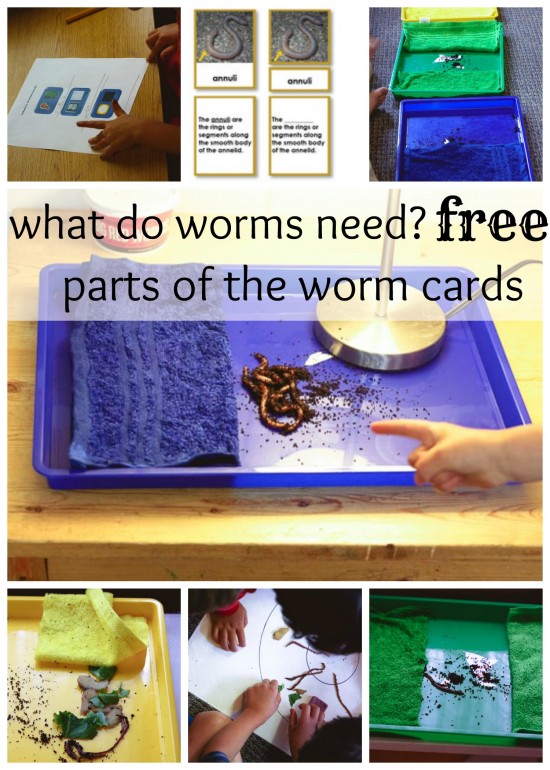

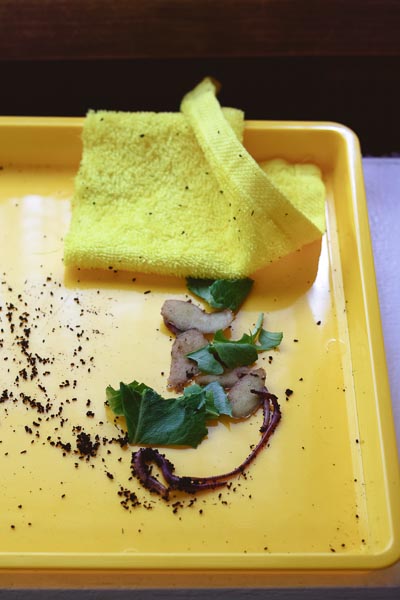
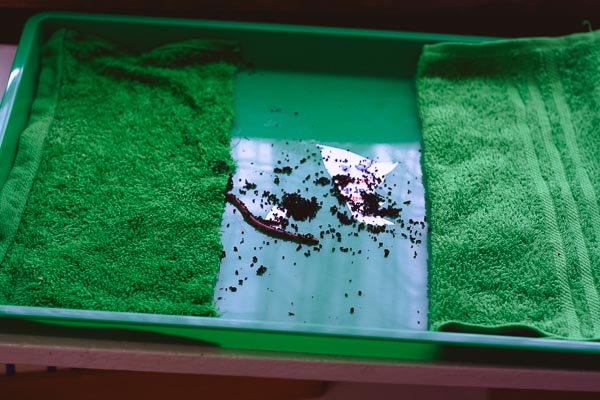


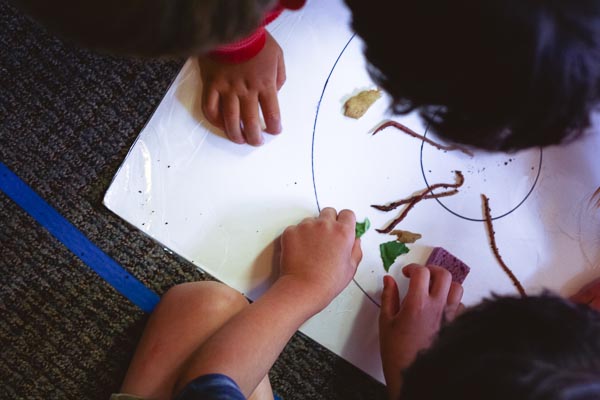




Love, love, LOVE this! Thanks for sharing such great ideas, and thanks to Loralee as well! You’ve totally inspired me to try this with my kids! We found some worms in our backyard a few weeks ago and my son was so interested. It would be great to capitalize on that interest with some of these activities. 🙂
It was great fun. Thanks for sharing it on Pinterest!
Hi Thank You for the good idea. We recently celebrated Earth Day. It will be interesting to show worms and give some interesting activities, which would be great fun to know that is hidden in the Earth.
Worms are so cool and so helpful to the earth!
Loving this and linking up to it on Friday! (Hopefully I can convince my non-mud lovers to engage…)
Thanks for sharing it!